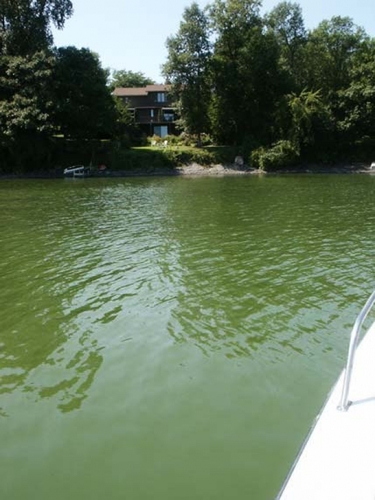To help Vermonters and visitors enjoy themselves at the beach and on the water this summer, health officials are encouraging people to learn how to watch for and avoid cyanobacteria - also known as blue-green algae.
Warmer weather creates ideal conditions for cyanobacteria to grow in ponds and lakes. In large numbers, these tiny microorganisms can form blooms on the water's surface and wash up along shorelines.
Blooms are usually green or blue-green, and can make the water look like pea soup or spilled paint, but can be other colors too. Cyanobacteria blooms are a public health concern because they sometimes produce toxins harmful to humans and animals.
The Vermont Department of Health says the best way to protect yourself from cyanobacteria is to know what they look like, and to stay out of the water when you think you see a bloom.
To help people know what to watch for, the department has created a video available at healthvermont.gov/cyanobacteria.
“Identifying cyanobacteria can be tricky because harmless algae and other organisms can look similar,” Bridget O'Brien, an environmental scientist for the Health Department, said in a news release. “But just like we avoid poison ivy by recognizing its tell-tale appearance, we can learn to avoid cyanobacteria.”
Anyone who sees cyanobacteria should not swim, wade or boat in the area, or let pets or livestock drink the water. It's best to inform a beach manager or town office about potential cyanobacteria.
Exposure to cyanobacteria may cause minor skin rashes, sore throats, diarrhea, stomach problems, or more serious health problems. Children and pets are at higher risk because they are more likely to play near the shoreline and drink water while swimming. Contact your health care provider if you or your children feel sick.
In addition to watching the video, people can check the department's online tracker to see where and when cyanobacteria have been reported by trained volunteer lake monitors, state scientists and members of the public.
“This is a great resource for people to see what reports have come in, but be sure to check the report date,” O'Brien said. “It's important to remember that conditions change rapidly, so beachgoers should use their best judgement based on what they see.”
O'Brien also said the public can help by reporting any potential cyanobacteria sightings. People can email the location and any photos of a suspected bloom to [email protected], or call the Health Department at 800-439-8550 during business hours.
“Vermont's lakes and rivers have so much to offer,” said O'Brien. “Knowing what cyanobacteria look like is the key to having a safe and enjoyable time out on the water. Remember, when in doubt, it's best to stay out.”
